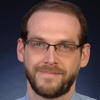Taking Measure
Just a Standard Blog
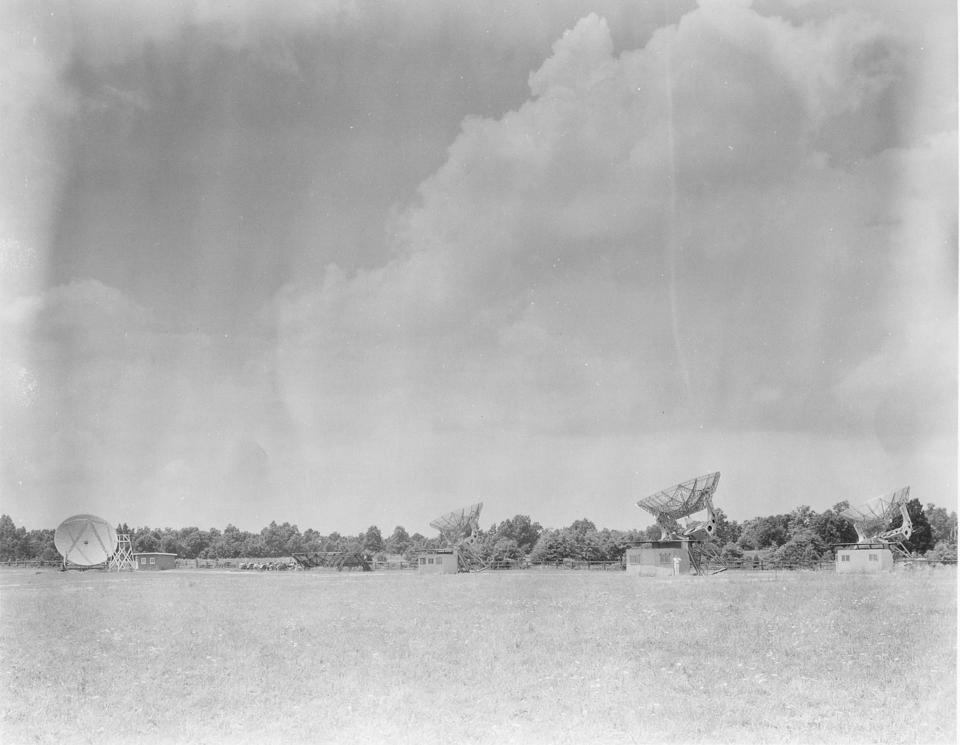
The Sterling, Virginia, radio telescope installation.
Dulles International Airport, in the Northern Virginia suburbs of Washington, D.C., sits on land once owned by NIST. It was on this spot that NIST brought together an eclectic combination of people and projects that would help birth the field of radio astronomy. It would involve a backyard tinkerer, a former Nazi radar installation, a confidential Defense Department project, and the desire of people living west of the Mississippi River to watch television.
“Electrical Disturbances of Extraterrestrial Origin”
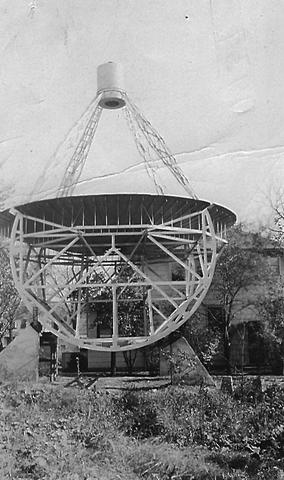
In 1932 Karl Jansky, a radio engineer at the Bell Laboratories campus in Holmdel, New Jersey, published a paper with the rather sedate title “Directional Studies of Atmospherics at High Frequencies.” The paper described his work identifying the sources of radio static experienced when testing Bell Laboratories’ new trans-Atlantic radio telephone service. Most of the static came from thunderstorms, but Jansky also identified errant radio signals from another source, seemingly coming from the direction of the sun. This was not terribly surprising. Physicists had already theorized that the sun could emit radio waves.
Jansky continued to study and refine his data, and the following year published two follow-up papers. This time around, the titles of his papers would be far more exciting: “Radio Waves from Outside the Solar System” and “Electrical Disturbances Apparently of Extraterrestrial Origin”! Jansky had determined that the radio signals were coming not from our sun, but from some distant point in the Milky Way.
His finding would eventually revolutionize the study of astronomy. No longer would astronomers be limited by what they could see through optical telescopes. Since large swaths of the cosmos are filled with dust that light cannot penetrate, studying the radio signals given off by distant invisible celestial bodies opened up a larger window on the universe.
Unfortunately for Jansky, Bell Labs was not in the astronomy business, and they moved him on to other projects.
Scoping Out the Backyard
Hoping to pick up where Jansky left off was a 22-year-old college senior named Grote Reber. He had read Jansky’s papers and excitedly applied to work at Bell Labs. Bell turned him down. Inquiries at several other institutions received the same response. Reber settled for a job as an engineer with a radio equipment manufacturer in Chicago and decided to pursue radio astronomy as a hobby. He would spend his free nights and weekends in the backyard of his Wheaton, Illinois, home designing and building a 9-meter-wide, 2-metric-ton dish antenna on an adjustable stand. Completed in 1937, it is considered to be the world’s first astronomical radio telescope. Reber used his backyard dish to map cosmic radio sources, discovering new galaxies, supernovas and other celestial bodies.
He published some of his findings in 1940 in the Astronomical Journal, but the article attracted little interest. Partly this was the fault of the Great Depression; there was no funding available to explore new avenues of science. Reber would also later claim that the lack of interest was because “the astronomers of the time didn’t know anything about radio or electronics, and the radio engineers didn’t know anything about astronomy.”
Whatever the reason, Reber would spend a decade working out of his backyard, essentially the world’s only radio astronomer.
Standard Job Offer
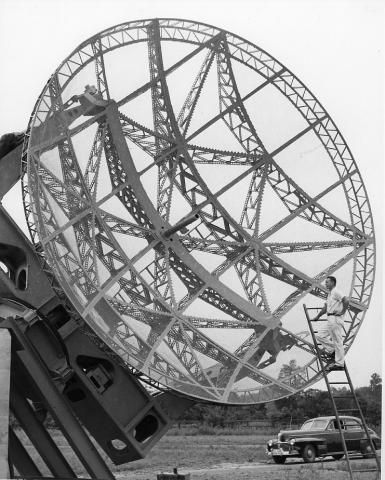
Things would change after World War II. In 1947 Reber was in the audience at a radio engineers’ conference listening to a talk given by Edward Condon, the director of NIST. Condon described NIST’s role “to undertake research that commercial companies couldn’t do well or couldn’t do at all.” Reber quickly dashed off a letter to Condon explaining that this was the exact type of research he was doing. Intrigued, Condon sent two physicists to meet with Reber and take a look at his backyard radio telescope.
The meeting went well. Using funding provided by the Defense Department, Condon offered to hire Reber and purchase his backyard dish, with the proviso that Reber and his equipment move to NIST’s radio-propagation research station near Sterling, Virginia. NIST had been involved in radio research for decades, using rural field stations far from urban sources of interference to study how the Earth’s atmosphere affects radio transmissions. These studies helped the burgeoning radio broadcasting industry and benefited military communications during the war.
Hiring Reber was a win-win for all concerned:
- Reber could now focus full-time on radio astronomy, backed by institutional-level funding.
- NIST, with its eye on helping grow the commercial TV industry—the first licensed TV station west of the Mississippi River would go on air that same year, and many more were expected—needed the cosmic radio data Reber would compile. That data could be used to help determine the best designs, locations and operating frequencies for TV transmitters in order to avoid sources of interference.
- The Defense Department’s reasons for funding the project were left unstated. “Neither Reber nor anyone else at [NIST] even hints that this had anything to do with his being hired, [but] Reber’s big mirror [his radio telescope] may have some bearing on future war,” said a 1948 article in the magazine Popular Science. The magazine speculated about one possible reason for the military’s interest: If cosmic radio interference could be accurately predicted and mapped, airplane attacks during future wars could be timed to occur when an enemy’s radar would be temporarily disabled by the interference.
In addition to providing the funding for Reber’s project, the military had one other gift for him: a Giant Würzburg. During the war, the Germans deployed sophisticated anti-aircraft radar along the front lines. Named “Giant Würzburgs” after a German city and because of their large 7.4-meter diameter, these Nazi radar dishes were of intense interest to Allied forces and were often targets of covert special-operations missions. When American forces captured a Giant Würzburg from the retreating Germans toward the end of the war, it was dismantled and shipped to the U.S. for study by the Army Signal Corps. Its technical secrets now known, the military donated the Würzburg to NIST to be repurposed for the radio-astronomy project, supplementing Reber’s home-built telescope and allowing for the study of a wider range of radio frequencies.
Telescopes on the Move
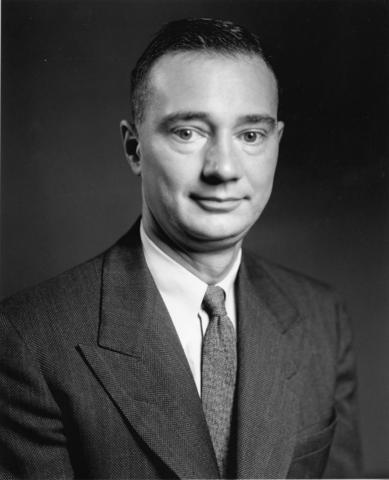
By the early 1950s, with the influence of the research program at NIST and subsequent programs at other scientific institutions, radio astronomy had grown to become an accepted field of study. After five years working on the NIST project, Reber grew troubled by the rise of McCarthyism in Washington, D.C., and he decided to leave government work. Luckily for him, in 1951 he won a generous grant from the Research Corporation for Science Advancement, a private philanthropic organization. This funding allowed Reber to become an independent researcher. He left the Sterling, Virginia, field station and moved to the then territory of Hawaii, before finally settling in Tasmania. Reber remained active in radio astronomy until his death in 2002.
Reber’s equipment and the Giant Würzburg were still owned by NIST. In the mid-1950s the government asked NIST for its land in Virginia to use as the site for the future Dulles Airport. NIST moved Reber’s dish and the Giant Würzburg to the NIST’s new Boulder, Colorado, campus. In 1959 NIST sent Reber’s telescope to the National Radio Astronomy Observatory installation in Green Bank, West Virginia. It remains there to this day, on display for public viewing, next to a replica of the apparatus Karl Jansky used to make his original discovery.
Reber’s telescope was declared a National Historic Landmark in 1989. The Giant Würzburg remained in Boulder until 2006, when it was acquired by the National Electronics Museum in Linthicum, Maryland. The giant dish is on display outside the museum, where it stands taller than the museum itself.
Radio Astronomy Today
Although the instruments Reber used during his NIST work are now museum pieces, the field of radio astronomy that he pioneered keeps growing in importance. In a “State of the Profession” report published in 2010, the director of the National Radio Astronomy Observatory notes that radio astronomy “plays a critical role in all areas of modern astrophysics.”
He further elaborates:
“Radio instruments carry out precision cosmological measurements, test fundamental physics, and probe astrophysics and chemistry in extreme environments. … Radio astronomy probes deep into the earliest, most intense, and optically obscured, phases of planet, star, galaxy, and black hole formation. … Radio astronomy provides the highest-resolution imaging and astrometry [measurement of the positions of stars] currently available, as well as providing essential tools for the study of magnetic fields and energetic particles throughout the cosmos.”
The National Research Council agrees on the importance of radio astronomy. In its 2010 Decadal Survey of Astronomy and Astrophysics, the Council stated that “radio astronomy stands poised to continue to offer considerable promise in the exploration of our universe.”
NIST played a critical role in raising radio astronomy from a backyard hobby to what is now a major field of research. Reflecting on this legacy in an oral-history interview with the American Institute of Physics, physicist Alan Shapley, who worked with Reber at NIST, said, “Whenever you land at Dulles [airport], you can envision all the good scientific work on radio [astronomy] that was done on those grounds.”


